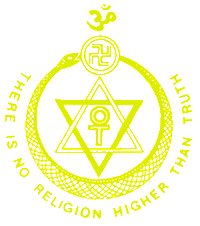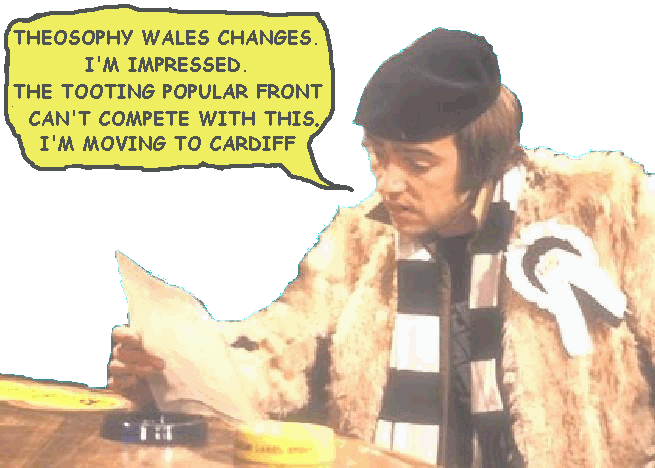HORNET
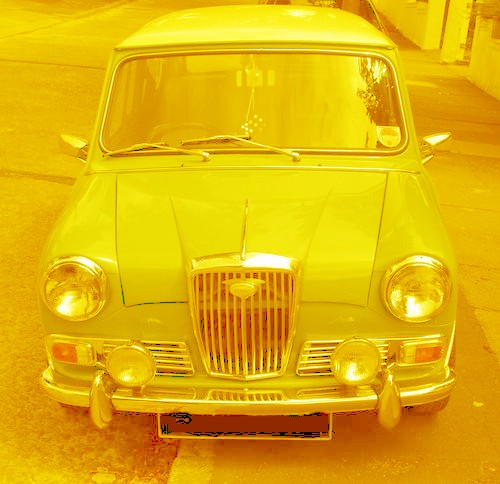
The
Wolseley Hornet 1960s model
An
upmarket version of the Mini
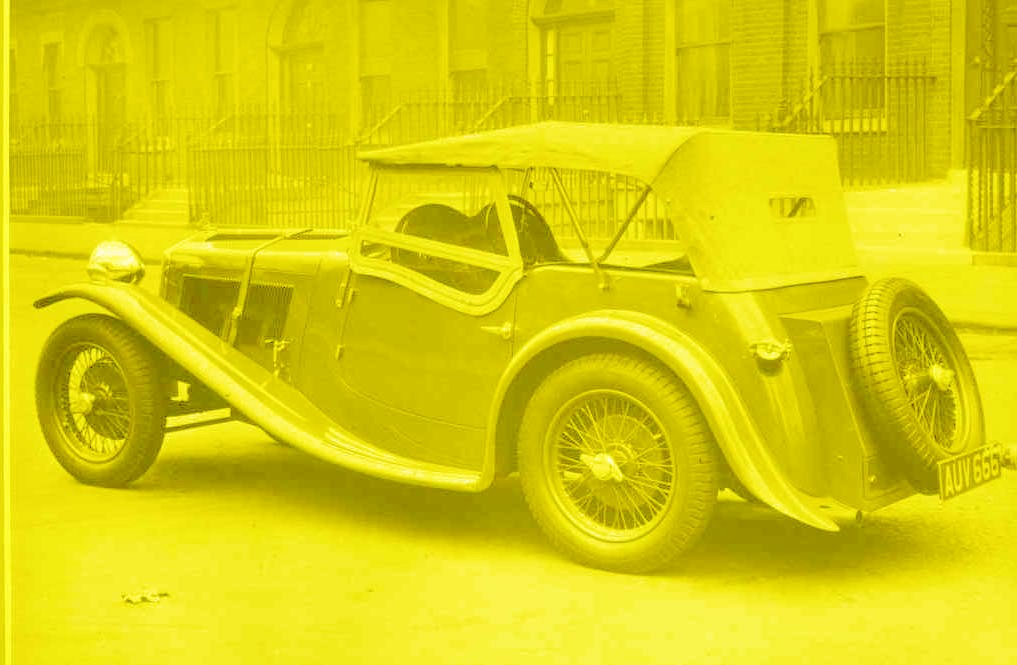
A
1930s Wolseley Hornet sports car
The
bodywork for these was made to order by a coachbuilder
of
the customer’s choice and there were many variations of this car.
The
series ran from 1930 to 1935
The Wolseley Hornet both in its 1930s sports
car
incarnation, and its 1960s posh mini version,
has
very little (in fact nothing) to do with
Theosophy
but we have found that Theosophists and new
enquirers do like pictures of classic cars
and we get a lot of positive feedback.
You can find Theosophy Wales groups
in
Bangor, Cardiff, Conwy & Swansea
Theosophy Wales has no controlling
body
and is made up of independent groups
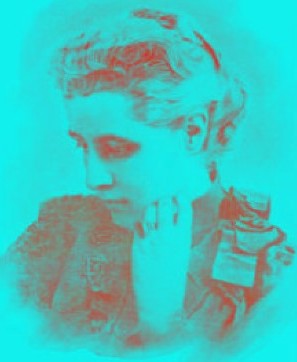
________________________
The
Ancient Wisdom
by
Annie
Besant
The Buddhic
and Nirvanic Planes
We have seen that
man is an intelligent self-conscious entity, the Thinker, clad in bodies
belonging to the lower mental, astral and physical planes ; we have now to
study the Spirit which is his innermost Self, the source whence he proceeds.
This Divine
spirit, a ray from the LOGOS, partaking of His own essential Being, has the
triple nature of the LOGOS Himself, and the evolution of man as man consists in
the gradual manifestation of these three aspects, their development from
latency into activity, man thus repeating in miniature the evolution of the
universe.
Hence he is
spoken of as the microcosm, the universe being the macrocosm; he is called the
mirror of the universe, the image, or reflection, of God ; ( "Let us make
man in our image, after our likeness." – Gen. I, 26. ) – and hence also
the ancient axiom, "As above, so below." It is this in-folded deity
that is the
guarantee of
man’s final triumph ; this is the hidden motive power that makes evolution at
once possible and inevitable, the upward-lifting force that slowly overcomes
every obstacle and every difficulty. It was this Presence that Matthew Arnold
dimly ( ) sensed when he wrote of the "Power, not ourselves, that makes
for righteousness," but he erred in thinking "not ourselves,"
for it is the very innermost Self of all – truly not our separated selves, but
our Self. (Âtma, the reflection of Paramâtmâ.)
This Self is
the One, and hence is spoken of as the Monad – ( It is called the Monad,
whether it be the Monad of spirit-matter, Âtma ; or the Monad of form or the
human Monad, Âtma-Buddhi-Manas. In each it is a unit and acts as a unit,
whether the
unit be one-faced, two-faced, or three-faced) – and we shall need to remember
that this Monad is the outbreathed life of the LOGOS, containing within itself
germinally, or in a state of latency, all the divine powers and attributes.
These powers
are brought into manifestation by the impacts arising from contact with the
objects of the universe into which the Monad is thrown ; the friction caused by
these gives rise to responsive thrills from the life subjected to their
stimuli, and one by one the energies of the life pass from latency into
activity. The human Monad – as it is called for the sake of distinction – shows
as we have already said, the three aspects of Deity, being the perfect image of
God, and in the human cycle these three aspects are developed one after the
other.
These aspects
are the three great attributes of the Divine Life as manifested in the
universe, existence, bliss, and intelligence – ( Satchitânanda is often used in
the Hindu Scriptures as the abstract name of Brahman, the Triműrti being the
concrete manifestation of these) –the three LOGOI severally showing these forth
with all the perfection possible within the limits of manifestation.
In man, these
aspects are developed in the reversed order – intelligence, bliss, existence –
"existence" implying the manifestation of the divine powers. In the
evolution of man that we have so far studied we have been watching the
development of the third aspect of the hidden deity – the development of
consciousness as intelligence. Manas, the Thinker, the human Soul, is the image
of the Universal Mind, of the Third LOGOS, and all his long pilgrimage on the
three lower planes is devoted to the evolution of this third aspect, the
intellectual side of the divine nature in man.
While this is
proceeding, we may consider the other divine energies as rather brooding over
the man, the hidden source of his life, than as actively developing their forces
within him. They play within themselves, unmanifest. Still, the preparation of
these forces for manifestation is slowly proceeding; they are being roused from
that unmanifested life that we speak of as latency by the ever-increasing
energy of the vibrations of the intelligence, and the bliss-aspect begins to
send outwards its first vibrations – faint pulsings of its manifested life
thrill forth.
This
bliss-aspect is named in theosophical terminology Buddhi, a name derived from
the Sanskrit word for wisdom, and it belongs to the fourth, or buddhic plane of
our universe, the plane, in which there is still duality, but were there is no
separation. Words fail me to convey the idea, for words belong to the lower
planes where duality and separation are ever connected, yet some approach to
the idea may be gained.
It is a state
in which each is himself, with a clearness and vivid intensity which cannot be
approached on lower planes, and yet in which each feels himself to include all
others, to be one with them, inseparate and inseparable. (The reader should
refer back to the Introduction, p. 36, and reread the description given by
Plotinus of this state, commencing: "They likewise see all things."
And he should note the phrases, "Each likewise is everything," and
"In each, however a different quality predominates.)
Its nearest
analogy on earth is the condition between two persons who are united by a pure,
intense love, which makes them feel as one person, causing them to think, feel,
act, live as one, recognising no barrier, no difference, no mine and thine, no
separation. (It is for this reason that the bliss of divine love has in many
Scriptures been imaged by the profound love of husband and wife, as in the
Bhagavad Purâna of the Hindus, the Song of Solomon of the Hebrews and
Christians. This is also the love of the Sufi mystics, and indeed of all
mystics.)
It is a faint
echo from this plane which makes men seek happiness by union between themselves
and the object of their desire, no matter what that object may be. Perfect
isolation is perfect misery ; to be stripped naked of everything, to be hanging
in the void of space, in utter solitude, nothing anywhere save the lone
individual, shut out from all, shut into the separated self – imagination can
conceive no horror more intense. The antithesis to this is union, and perfect
union is perfect bliss.
As this
bliss-aspect of the Self begins to send outwards its vibrations, these
vibrations, as on the planes below, draw round themselves the matter of the
plane on which they are functioning, and thus is formed gradually the buddhic
body, or bliss-body, as it is appropriately termed. (Ânandamayakosha, or
bliss-sheath, of the Vedântins. It is also the body of the sun, the solar body,
of which a little is said in the Upanishads and elsewhere.)
The only way
in which the man can contribute to the building of this glorious form is by
cultivating pure, unselfish, all-embracing, beneficent love, love "that
seeketh not its own" – that is, love that is neither partial, nor seeks
any return for its outflowing. This spontaneous outpouring of love is the most
marked of the divine attributes, the love that gives everything, that asks
nothing. Pure love brought the universe into being, pure love maintains it,
pure love draws it upwards towards perfection, towards bliss.
And wherever
man pours out love on all who need it, making no difference, seeking no return,
from pure spontaneous joy in the outpouring, there that man is developing the
bliss-aspect of the Deity within him, and is preparing that body of beauty and
joy ineffable into which the Thinker will rise, casting away the limits of
separateness, to find himself, and yet one with all that lives. This "the
house not made with hands, eternal in the heavens," whereof wrote St.
Paul, the great Christian Initiate ; and he raised charity, pure love, above
all other virtues, because by that alone can man on earth contribute to that
glorious dwelling. For a similar reason is separateness called "the great
heresy" by the Buddhist, and "union" is the goal of the Hindu ;
liberation is the escape from the limitations that keep us apart, and
selfishness is the root-evil, the destruction whereof is the destruction of all
pain.
The fifth
plane, the Nirvânic, is the plane of the highest human aspect of the God within
us, and this aspect is named by theosophists Âtmâ, or the Self. It is the plane
of pure existence, of divine powers in their fullest manifestation in our
fivefold universe – what lies beyond on the sixth and seventh planes is hidden
in the unimaginable light of God.
This âtmic,
or nirvânic, consciousness, the consciousness belonging to life on the fifth
plane, is the consciousness attained by those lofty Ones, the first fruits of
humanity, who have already completed the cycle of human evolution, and who are
called Masters. (Known as Mahâtmâs, great Spirits, and Jivanmuktas, liberated
souls, who remain connected with physical bodies for the helping of humanity.
Many other great Beings also live on the nirvânic plane.)
They have
solved in Themselves the problem of uniting the essence of individuality with
non-separateness, and live, immortal Intelligences, perfect in wisdom, in
bliss, in power.
When the human
Monad comes forth from the LOGOS, it is as though from the luminous ocean of
Âtmâ a tiny thread of light was separated off from the rest by a film of
buddhic matter, and from this hung a spark which becomes enclosed in an
egg-like casing of matter belonging to the formless levels of the mental plane.
"The
spark hangs from the flame by the finest thread of Fohat." ( Book of
Dzyan, Stanza vii, 5, ; Secret Doctrine, vol. I, p. 66, 1893 ed. ; p. 98 Adyar
Edition)
As evolution
proceeds, this luminous egg grows larger and more opalescent, and the tiny
thread becomes a wider and wider channel through which more and more of the
âtmic life pours down. Finally, they merge – the third with the second, and the
twain with the first, as flame merges with flame and no separation can be seen.
The evolution
of the fourth and fifth planes belongs to a future period of our race, but
those who choose the harder path of swifter progress may tread it even now, as
will be explained later. (see Chapter XI, on "Man’s Ascent.") On that
path the bliss body is quickly evolved, and a man begins to enjoy the
consciousness of that loftier region, and knows the bliss which comes from the
absence of separative barriers, the wisdom which flows in when the limits of
the intellect are transcended. Then is the wheel escaped from which binds the
soul in the lower worlds, and then is the first foretaste of the liberty which
is found perfected on the nirvânic plane.
The nirvânic
consciousness is the antithesis of annihilation; it is existence raised to a
vividness and intensity inconceivable to those who know only the life of the
senses and the mind. As the farthing rush-light to the splendour of the sun at
noon, so is the nirvânic to the earth-bound consciousness, and to regard it as an
annihilation because the limits of the earthly consciousness have vanished, is
as though a man, knowing only the rush-light, should say that light could not
exist without a wick immersed in tallow. That Nirvâna is, has been born witness
to in the past in the Scriptures of the world by
Those who
enjoy it and live its glorious life, and is still borne witness to by others of
our race who have climbed that lofty ladder of perfected humanity, and who
remain in touch with earth that the feet of our ascending race may mount its
rungs unfalteringly.
In Nirvâna
dwell the mighty Beings who accomplished Their own human evolution in past
universes, and who came forth with the LOGOS when He manifested Himself to
bring this universe into existence. They are His ministers in the
administration of the worlds, the perfect agents of His will. The Lords of all
the hierarchies of the Gods and lower ministrants that we have seen working on
the lower planes have here Their abiding-place, for Nirvâna is the heart of the
universe, whence all its life-currents proceed. Hence the Great Breath comes
forth, the life of all, and thither it is indrawn when the universe has reached
its term. There is the Beatific Vision for which mystics long, there the
unveiled Glory, the Supreme Goal.
The
Brotherhood of Humanity – nay, the Brotherhood of all things – has its sure
foundation on the spiritual planes, the âtmic and buddhic, for here alone is
unity, and here alone perfect sympathy is found. The intellect is the
separative principle in man, that marks off the " I " from the "
not I ," that is conscious of itself, and sees all else as outside itself
and alien. It is the combative, struggling, self-assertive principle, and from
the plane of the intellect downwards the world presents a scene of conflict,
bitter in proportion as the intellect mingles in it. Even the passion-nature is
only spontaneously combative when it is stirred by the feeling of desire and
finds anything standing between itself and the object of its desires; it
becomes more and more aggressive as the mind inspires its activity, for then it
seeks to provide for the gratification of future desires, and tries to
appropriate more and more from the stores of Nature.
But the
intellect is spontaneously combative, its very nature being to assert itself as
different from others, and here we find the root of separateness, the
ever-springing source of divisions among men.
But unity is
at once felt when the buddhic plane is reached, as though we stepped from a
separate ray, diverging from all other rays, into the sun itself, from which
radiate all the rays alike.
A being
standing in the sun, suffused with its light, and pouring it forth, would feel
no difference between ray and ray, but would pour forth along one as readily
and easily as along another. And so with the man who has once consciously
attained the buddhic plane ; he feels the brotherhood that others speak of as
an ideal, and pours himself out into any one who wants assistance, giving
mental, moral, astral, physical help exactly as it is needed.
He sees all
beings as himself, and feels that all he has is theirs as much as his; nay, in
many cases, as more theirs than his, because their need is greater, their
strength being less. So do the elder brothers in a family bear the family
burdens, and shield the little ones from suffering and privation ; to the
spirit of brotherhood weakness is a claim for help and loving protection, not
an opportunity for oppression.
Because They
had reached this level and mounted even higher, the great Founders of religions
have ever been marked by Their overwelling compassion and tenderness,
ministering to the physical as well as to the inner wants of men, to every man
according to his need. The consciousness of this inner unity, the
recognition
of the One Self dwelling equally in all, is the one sure foundation of
Brotherhood ; all else save this is frangible.
This
recognition, moreover, is accompanied by the knowledge that the stage in
evolution reached by different human and non-human beings depends chiefly on
what we may call their age. Some began their journey in time very much later
than others, and, though the powers in each be the same, some have unfolded far
more of those powers than others, simply because they have had a longer time
for the process than their younger brethren. As well blame and despise the seed
because it is not yet a flower, the bud because it is not yet the fruit, the
babe because it is not yet the man, and blame and despise the germinal and baby
souls around us because they have not yet developed to the stage we ourselves
occupy. We do not blame ourselves because we are not yet as Gods ; in time we
shall stand where our elder Brothers are standing.
Why should we
blame the still younger souls who are not yet as we? The very word brotherhood
connotes identity of blood and inequality of development ; and it therefore
represents exactly the link between all creatures in the universe – identity of
the essential life, and difference in the stages reached in the manifestation
of that life.
We are one in
our origin, one in the method of our evolution, one in our goal, and the
differences of age and stature but give opportunity for the growth of the
tenderest and closest ties. All that a man would do for his brother of the
flesh, dearer to him than himself, is the measure of what he owes to each who
shares with him the one Life. Men are shut out from their brothers’ hearts by
differences of race, of class, of country ; the man who is wise by love rises
above all these petty differences, and sees all drawing their life from the one
source, all as part of his family.
The
recognition of this Brotherhood intellectually, and the endeavour to live it
practically, are so stimulative of the higher nature of man, that it was made
the one obligatory object of the Theosophical Society, the single "article
of belief" that all who would enter its fellowship must accept. To live
it, even to a small extent, cleanses the heart and purifies the vision ; to
live it perfectly would be to eradicate all stain of separateness, and to let
the pure shining of the Self irradiate us, as a light through flawless glass.
Never let it
be forgotten that this Brotherhood is, whether men ignore it or deny it. Man’s
ignorance does not change the laws of nature, nor vary by one hair’s breadth
her changeless, irresistible march. Her laws crush those who oppose them, and
break into pieces everything which is not in harmony with them.
Therefore can
no nation endure that outrages Brotherhood, no civilisation can last that is
built on its antithesis. We have not to make brotherhood ; it exists. We have
to attune our lives into harmony with it, if we desire that we and our works
shall not perish.
It may seem strange
to some that the buddhic plane – a thing to them misty and unreal – should thus
influence all planes below it, and that its forces should ever break into
pieces all that cannot harmonise itself with them in the lower worlds. Yet so
it is, for this universe is an expression of spiritual forces, and they are the
guiding, moulding energies pervading all things, and slowly, surely, subduing
all things to themselves.
Hence this
Brotherhood, which is a spiritual unity, is a far more real thing than any outward
organisation ; it is a life and not a form, "wisely and sweetly ordering
all things." It may take innumerable forms, suitable to the times, but the
life is one ; happy they who see its presence, and make themselves the channels
of its living force.
The student
has now before him the constituents of the human constitution, and the regions
to which these constituents respectively belong; so a brief summary should
enable him to have a clear idea of this complicated whole.
The human
Monad is Âtma-Buddhi-Manas, or, as sometimes translated, the Spirit, the
Spiritual Soul, and Soul, of man. The fact that these three are but aspects of
the Self makes possible man’s immortal existence, and though these three
aspects are manifested separately and successively, their substantial unity
renders it
possible for the Soul to merge itself in the spiritual Soul, giving to the
latter the precious essence of individuality, and for this individualised
Spiritual Soul to merge itself in the Spirit, colouring it – if the phrase may
be permitted with the hues due to individuality, while leaving uninjured its
essential unity with all other rays of the LOGOS and with the LOGOS Himself.
These three
form the seventh, sixth and fifth principles of man, and the materials which
limit and encase them, i.e., which make their manifestation and activity
possible, are drawn respectively from the fifth (nirvânic), the fourth
(buddhic), and the third (mental), planes of our universe. The fifth principle
further takes to itself a lower body on the mental plane, in order to come into
contact with the phenomenal worlds, and thus intertwines itself with the fourth
principle, the desire-nature, or Kâma, belonging to the second or astral plane.
Descending to
the first, the physical plane, we have the third, second and first principles –
the specialised life, or Prâna ; the etheric double, its vehicle ; the dense
body, which contacts the coarser materials of the physical world. We have
already seen that sometimes Prâna is not regarded as a "principle,"
and then the interwoven desire and mental bodies take rank together as Kâma
Manas ; the pure intellect is called the Higher Manas, and the mind apart from
desire
Lower Manas.
The most
convenient conception of man is perhaps that which most closely represents the
facts as to the one permanent life and the various forms in which it works and
which condition its energies, causing the variety in manifestation.
Then we see
the Self as the one Life, the source of all energies, and the forms as the
buddhic, causal, mental, astral, and physical (etheric and dense) bodies. (
Linga Sharira was the name originally given to the etheric body, and must not
be confused with the Linga Sharira of Hindu philosophy. Sthula Sharira is the
Sanskrit name for the dense body.)
It will be
seen that the difference is merely a question of names, and that the sixth,
fifth, fourth, and third "principles" are merely Âtmâ working in the
Buddhic, causal, mental and astral bodies, while the second and first
"principles " are the two lowest bodies themselves. This sudden
change in the method of naming is apt to cause confusion in the mind of the
student, and as H.P. Blavatsky, our revered teacher, expressed much
dissatisfaction with the then current nomenclature as confused and misleading,
and desired others and myself to try and improve it, the above names, as
descriptive, simple, and representing the facts, are here adopted.
The various
subtle bodies of man that we have now studied form in their aggregate what is usually
called the "aura" of the human being. This aura has the appearance of
an egg-shaped luminous cloud, in the midst of which is the dense physical body,
and from its appearance it has often been spoken of as though it were nothing
more than such a cloud. What is usually called the aura is merely such parts of
the subtle bodies as extend beyond the periphery of the dense physical body ;
each body is complete in itself, and interpenetrates those that are coarser
than itself ; it is larger or smaller according to its development, and all
that part of it that overlaps the surface of the dense body is termed the aura.
The aura is thus composed of the overlapping portions of the etheric double,
the desire body, the mental body, the causal body, and in rare cases the
buddhic body, illuminated by the Âtmic radiance.
It is
sometimes dull, coarse and dingy ; sometimes magnificently radiant in size,
light, and colour ; it depends entirely on the stage of evolution reached by
the man, on the development of his different bodies, on the moral and mental
character he has evolved. All his varying passions, desires, and thoughts are
herein written in form, in colour, in light, so that "he that runs may
read " if he has eyes for such script. Character is stamped thereon as
well as fleeting changes, and no deception is there possible as in the mask we
call the physical body. The increase in size and beauty of the aura is the
unmistakable mark of the man’s progress, and tells of the growth and
purification of the Thinker and his vehicles.
_____________________________________
Annie Besant Visits Cardiff 1924
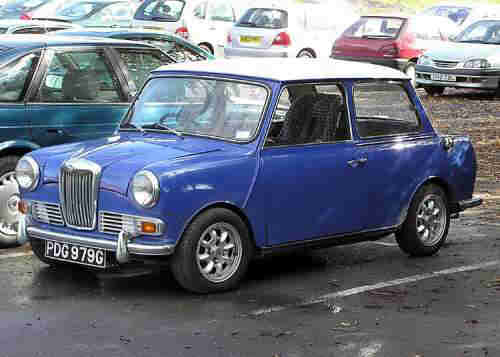
A
“G” reg Aug 1968 – July 1969 Wolseley Hornet MK III
The
1960s Wolseley Hornet was produced by the British Motor Corporation
(BMC)
from 1961 to 1969 and was upgraded thro’ MKI, II & III models
although
the outward design remained the same.
The
Wolseley Hornet was similar to the more expensive Riley Elf which ran
for
the same period with only the Riley grill and badge to distinguish
it
to the casual observer.
_____________________________
More Theosophy Stuff
with these links
Cardiff Theosophical
Society meetings are informal
and there’s always a
cup of tea afterwards
The
Cardiff Theosophical Society Website
The
National Wales Theosophy Website
Bangor,
Cardiff, Conwy & Swansea
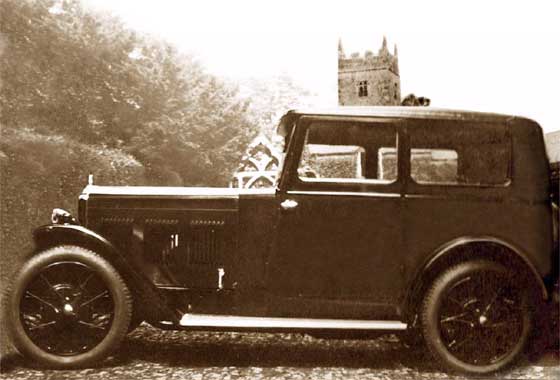
A
1931 Wolseley Hornet saloon style convertible
The Wolseley Hornet was a
lightweight saloon car produced by the Wolseley Motor Company from 1930 to
1935.
It had a six cylinder (1271cc) engine with a single overhead cam, and
hydraulic brakes. The engine was modified in 1932 to make it shorter and it was
moved forwards on the chassis. In 1935 the engine size was increased to
1378 cc.
Wolseley supplied the firsts cars as either an enclosed saloon with steel
or fabric body or open two seater. From 1931 it was available without the
saloon body, and was used as the basis for a number of sporting specials for
which the customer could choose a styling from a range of coachbuilders. In
1932 Wolsley added two and four seat coupés to the range. For its final year of
production the range was rationalised to a standard saloon and coupé.
A three speed gearbox was fitted to the earliest cars but this was upgraded
to a four speed in 1932 and fitted with synchromesh from 1933. A freewheel
mechanism could be ordered in 1934.The engine was also used in a range of MG
cars.
If you
run a Theosophy Group, please feel free
to use
any of the material on this site
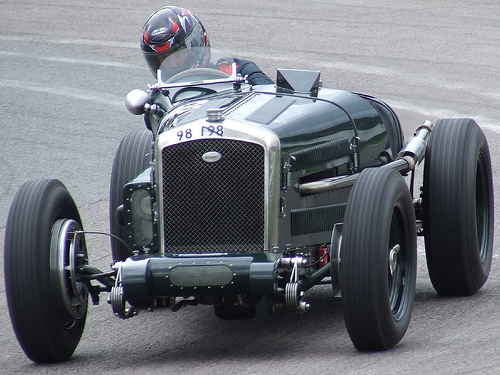
1930s
Wolseley Hornet racing car circuiting the track in modern times
The Most Basic Theosophy
Website in the Universe
A quick overview of Theosophy
and the Theosophical Society
If you run a Theosophy Group you
can use this as an introductory handout.
Theosophy Cardiff’s Instant Guide
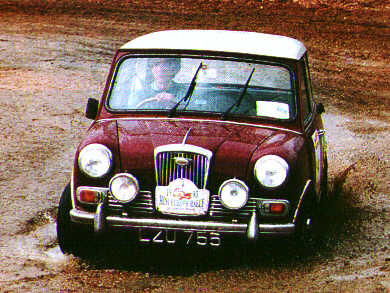
Wolseley
Hornet on a rally circa 1963
Theosophical Movement in Wales
as it separates into independent
groups that run do their own show
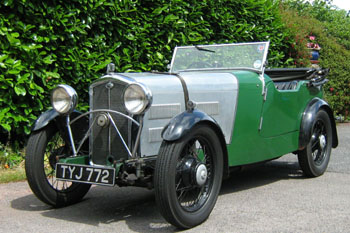
Early
1930s Wolseley Hornet customized roadster design
Basic
front mudguards not extending to runner boards.
Only
the driver gets a windscreen wiper
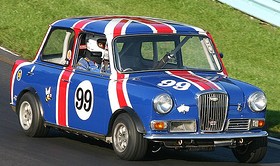
Patriotic
Wolseley Hornet on the race track in 1965
One liners and quick explanations
H P
Blavatsky is usually the only
Theosophist
that most people have ever
heard
of. Let’s put that right
The Voice of the Silence Website
An
Independent Theosophical Republic
Links
to Free Online Theosophy
Study
Resources; Courses, Writings,
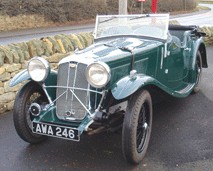
Early
1930s Customized Wolseley Hornet with integrated front mudguards
and
runner boards. Two windscreen wipers on this one.
The main criteria for the inclusion of
links on this site is that they have some
relationship (however tenuous) to Theosophy
and are lightweight, amusing or entertaining.
Topics include Quantum Theory and Socks,
Dick Dastardly and Legendary Blues Singers.

Four
views of the car in the picture above
A selection of articles on Reincarnation
Provided in response to the large
number of enquiries we receive at
Cardiff Theosophical Society on this subject
The Voice of the Silence Website
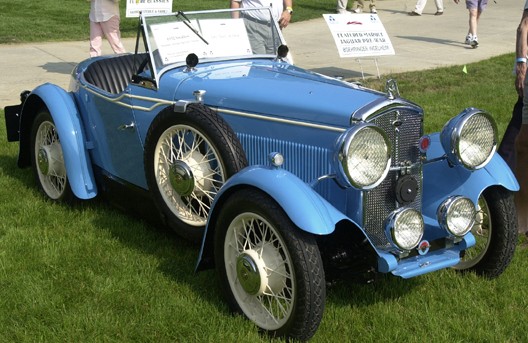
Swallow Wolseley Hornet 1932
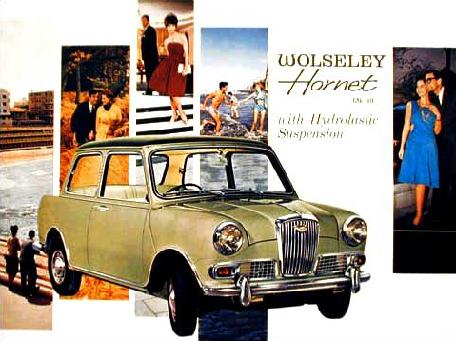
A
leaflet promoting the new hydrolastic suspension introduced in the mid sixties.
This
became standard on many BMC models including the Mini, 1100, 1300
&
1800 models. Suspension was maintained by means of a sealed fluid system
which
was claimed to be very comfortable but appeared to make some people
seasick
in the larger cars. As the cars got older, the suspension might burst
causing
the car’s suspension to collapse on one side meaning a difficult
drive
home or to a garage.
This is for
everyone, you don’t have to live
in Wales to
make good use of this Website
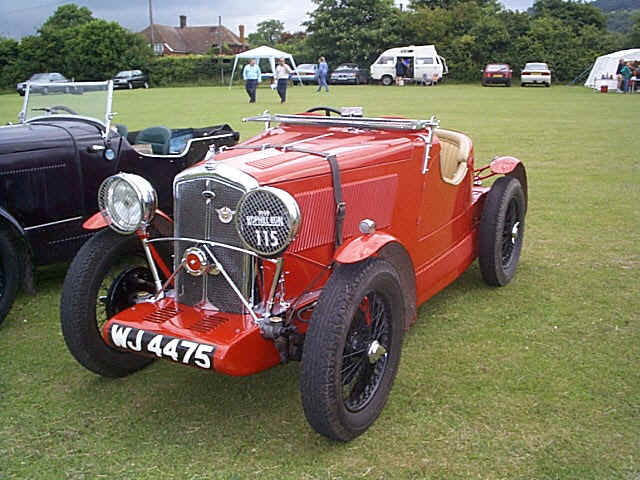
1930s
Corsica Wolseley Hornet
No
Aardvarks were harmed in the
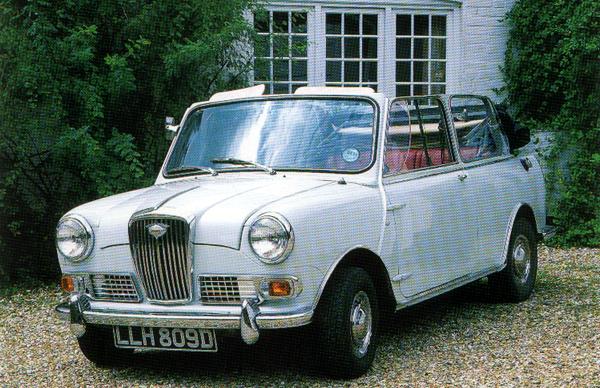
A 1966 Wolseley Hornet
convertible by Crayford Engineering
Convertible 1960s Hornets
were not standard and were very rare as
were all convertibles in the
Mini range.
Crayford did a run of 57
Hornet convertibles for Heinz to be given
as prizes in a competition
Within the British Isles, The Adyar Theosophical Society
has Groups in;
Bangor*Basingstoke*Billericay*Birmingham*Blackburn*Bolton*Bournemouth
Bradford*Bristol*Camberley*Cardiff*Chester*Conwy*Coventry*Dundee*Edinburgh
Folkstone*Glasgow*Grimsby*Inverness*Isle of
Man*Lancaster*Leeds*Leicester
Letchworth*London*Manchester*Merseyside*Middlesborough*Newcastle upon
Tyne
North Devon*Northampton*Northern Ireland*Norwich*Nottingham
Perth*Republic of Ireland*Sidmouth*Southport*Sussex*Swansea*Torbay
Tunbridge Wells*Wallasey*Warrington*Wembley*Winchester*Worthing
The Spiritual Home of Urban Theosophy
The Earth Base for Evolutionary Theosophy
A
B
C
D
EFG
H
IJ
KL
M
N
OP
QR
S
T
UV
WXYZ
Complete Theosophical Glossary in Plain Text Format
1.22MB
Quick
Explanations with Links to More Detailed Info
What is Theosophy ? Theosophy Defined (More Detail)
Three Fundamental Propositions Key Concepts of Theosophy
Cosmogenesis
Anthropogenesis
Root Races
Karma
Ascended Masters After Death States Reincarnation
The Seven Principles of Man Helena Petrovna Blavatsky
Colonel Henry Steel Olcott William Quan Judge
The Start of the Theosophical Society
History of the Theosophical Society
Theosophical Society Presidents
History of the Theosophical Society in Wales
The Three Objectives of the Theosophical Society
Explanation of the Theosophical Society Emblem
Glossaries of Theosophical Terms
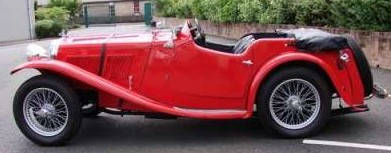
Another
good example of a 1930s Wolseley Hornet
An Outstanding Introduction to Theosophy
By a student of Katherine Tingley
Elementary Theosophy Who is the Man? Body and Soul
Body, Soul and Spirit Reincarnation Karma
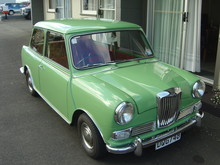
1960s
Riley Elf
Outwardly
the same as the Wolseley Hornet except for the badge & grill
A
bit more expensive
What Theosophy Is From the Absolute to Man
The Formation of a Solar System The Evolution of Life
The Constitution of Man After Death Reincarnation
The Purpose of Life The Planetary Chains
The Result of Theosophical Study
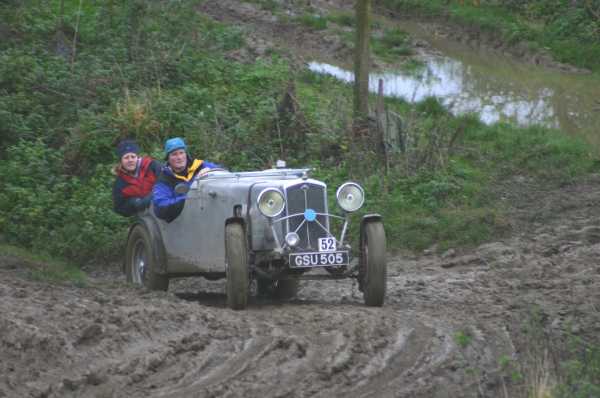
1930’s
Wolseley Hornet on a hill climb trial
An Outline of Theosophy
Charles Webster Leadbeater
Theosophy - What it is How is it Known? The Method of Observation
General Principles The Three Great Truths The Deity
Advantage Gained from this
Knowledge The Divine Scheme
The Constitution of Man The True Man Reincarnation
The Wider Outlook Death Man’s Past and Future
Cause and Effect What Theosophy does for us
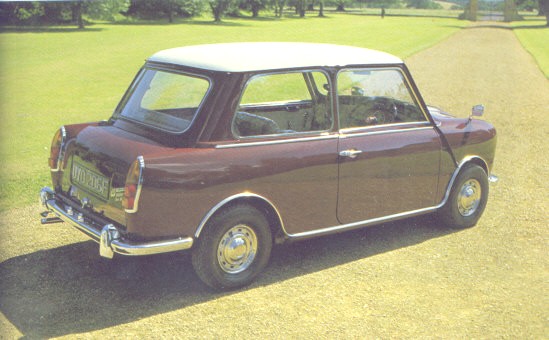
Side
and rear view of a 1960s Wolseley Hornet
Try these if you are looking
for a local
Theosophy Group or Centre
UK Listing of Theosophical Groups
Please tell us about your UK Theosophy Group
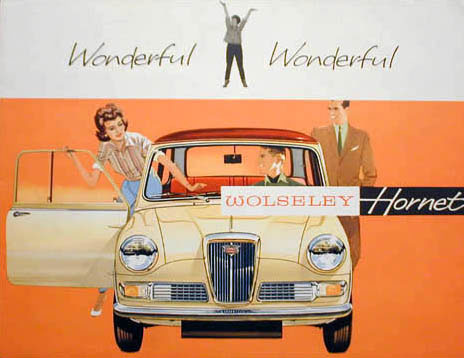
1960s
Wolseley Hornet promotional leaflet
___________________
into categories and
presented according to relevance of website.
Web Directory
- Add Link - Submit Article - Online Store - Forum
______________________
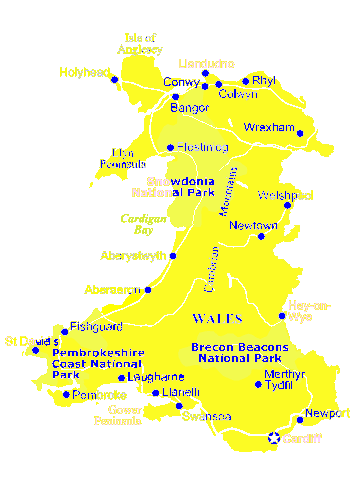
General pages about Wales, Welsh History
and The History of Theosophy in Wales
Wales is a
Principality within the United Kingdom and has an eastern
border with
England. The land area is just over 8,000 square miles.
Snowdon in North
Wales is the highest mountain at 3,650 feet.
The coastline is
almost 750 miles long. The population of Wales
as at the 2001 census is 2,946,200.
________________
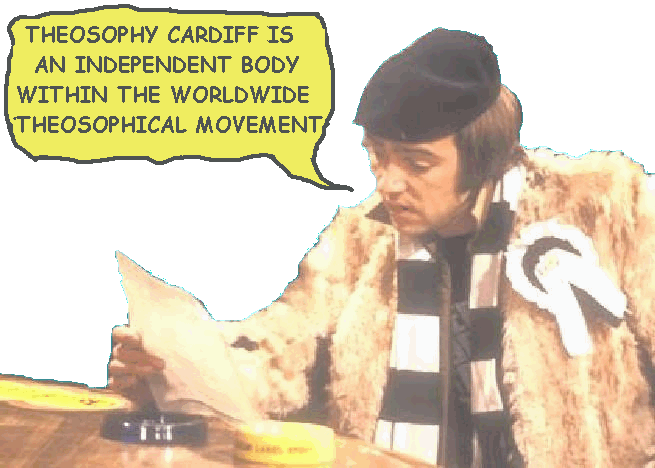
Bangor Conwy & Swansea Lodges are
members
of the Welsh Regional Association
(Formed 1993).
Theosophy Cardiff separated from the
Welsh Regional
Association in March 2008 and became an independent
body within the Theosophical Movement in March 2010
High
Drama & Worldwide Confusion
as
Theosophy Cardiff Separates from the
Welsh
Regional Association (formed 1993)
Theosophy Cardiff cancels its Affiliation
to the Adyar Based Theosophical Society
Cardiff, Wales,
UK, CF24 – 1DL
